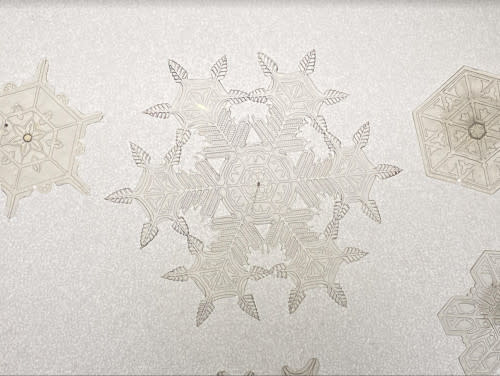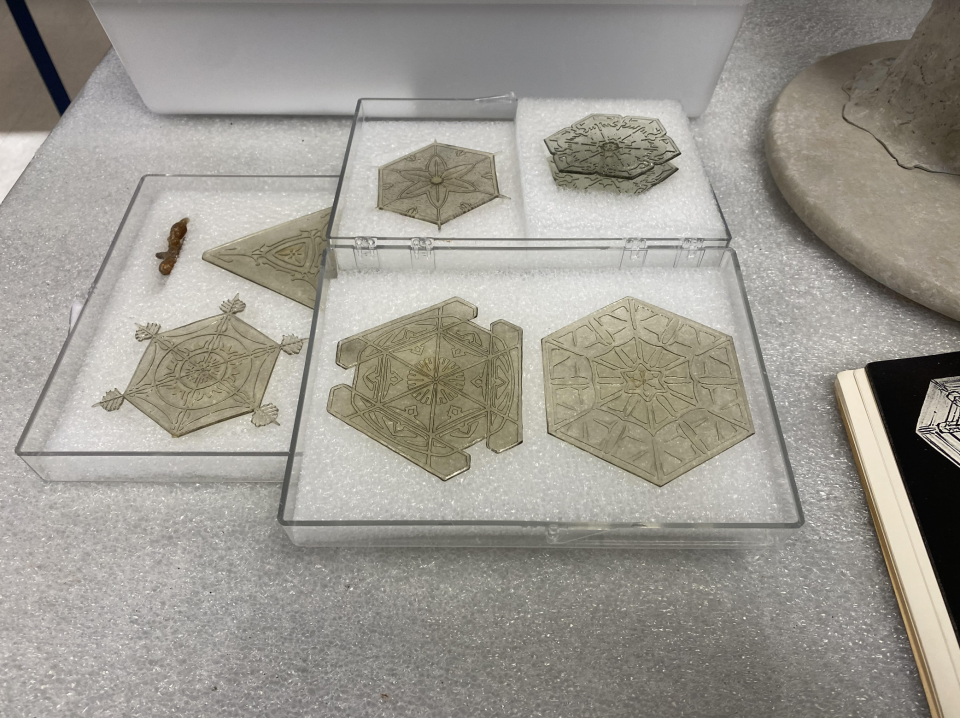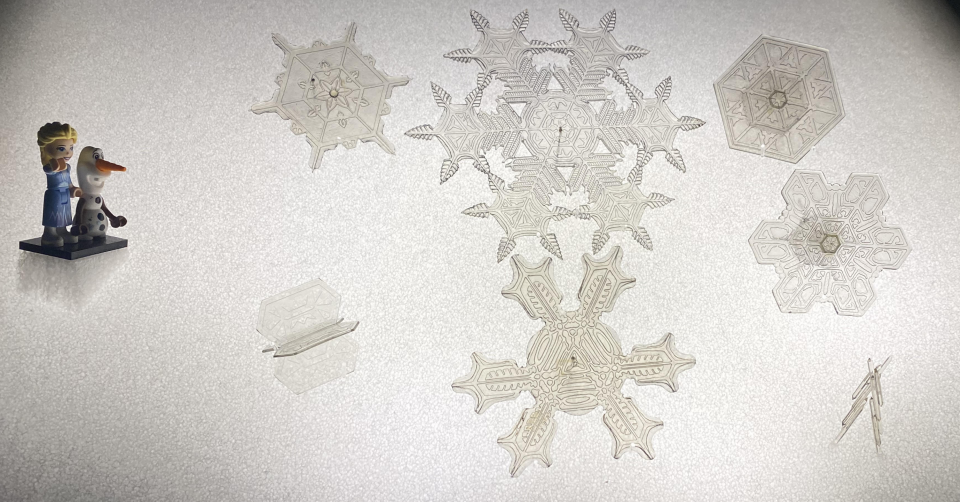World's first accurate models of snow crystals on display at Nova Scotia museum

The first scientifically accurate models of a snowflake are now on display at Nova Scotia's Museum of Natural History. It's all thanks to some digging by Curator of Geology Tim Fedak.
Buried away in the museum's archive for years, he recently rediscovered the models, and there wasn't much information to go from.

These intricate models of snow crystals were created by Edwin Reiber for the Cranbrook Institute of Science (Michigan). The models were the "first accurate models of snow crystals" (Photo: Nathan Coleman/The Weather Network)
RELATED: Macro photography reveals remarkable complexities of snowflake structures
He discovered through research that the snow crystals were meticulously crafted in 1940 by Edwin Reiber, an exhibit preparer who was a pioneer in using plastic for such models. These exquisite creations were initially made for the Cranbrook Institute of Science in Michigan, inspired by the latest photographs of snow crystals captured by chemist Corydon Grafton.
“Scientists in Michigan were doing experiments to seed clouds for the first time with dry ice that would make the clouds snow or rain, so these were made at a time when we were really learning a lot more about how the individual shapes of the snow crystals differ based on how dry and cold the air is,” Fedak tells The Weather Network.

Models like these were produced for a display at the Cranbrook Institute of Science, in Bloomfield Hills, Michigan, in the 1940's, according to Nova Scotia Museuem. The Cranbrook Newsletter from 1943 says the models were made by Edwin Reiber based on stereophotographs of snow crystals made by Corydon M. Grafton. (Photo: Nathan Coleman/The Weather Network)
RELATED: Why no two snowflakes are alike
Dry, cold air would have produced the columnar structures, which have two faces on the crystal.
The models come in several different shapes and all represent the six-sided structure of an ice crystal.
They are kept in a display case away from windows, as any exposure to high UV light would quickly degrade the rare early plastic.
Fedak explains that he took a geological interest in the snow crystals because they are, in fact, a mineral, just like quartz.

(Photo: Nathan Coleman/The Weather Network)
“These, by definition, are the mineral growths of a particular element. In this case, water. And it has a specific chemical formula. So, by definition, it is a geological mineral. It happens to melt at room temperature,” says Fedak.
While no two snowflakes that fall from the sky are the same, these models are an accurate portrayal of the snow crystals seen in the early photographs.
Learn more about the exhibit, here.

